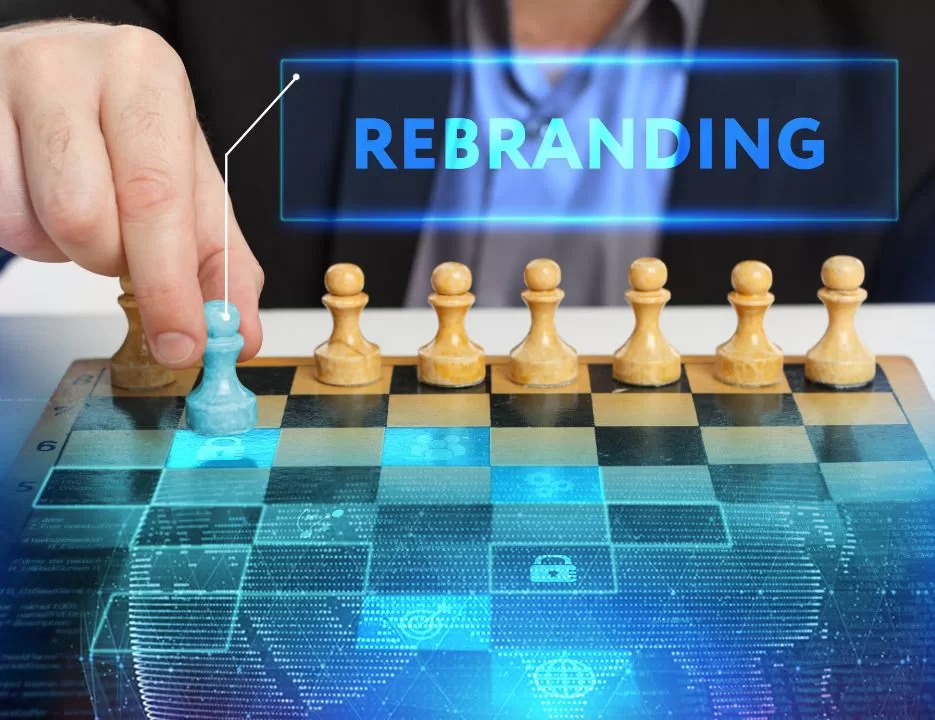
One of the most talked about topics in recent weeks was the change in Twitter’s visual identity and brand, led by Elon Musk. The little blue bird, which for 16 years visited millions of screens around the world – currently, around 353 million users – flew away, never to return. In its place, an X, which, here in Brazil, became a meme and was compared with other logos, such as that of Caixa Econômica Federal. Musk still wants to change the face of the X of his social network, which is now called XCorp. If the decision was right, the market will soon respond.
Memes and criticism aside, the fact is that any change causes excitement and enthusiasm, but it can also cause strangeness and distrust. Inside a company going through this process, a mix of anxiety and a hint of fear may arise. It is a complex movement, but a key piece to express some transformation or renewal.
Rebranding is strategy. Reshaping the way your brand positions itself in the market requires planning, study, trial and error. Even more so if the company already has a history and consolidated market. One of the biggest challenges is explaining to stakeholders how much the decision to change has to do with a new phase.
Internally, there is still the biggest challenge of adapting the language of employees, who until yesterday wore the concept shirt that will be left behind. Changing this thinking is changing the culture. And without directly engaging senior management, nothing will be possible. And it makes a lot of sense.
You need to put yourself in the shoes of a frontline employee. Suddenly, without further explanation, an order comes from above that, starting tomorrow, I must change my speech because the identity of my company is now different. At the very least, the feeling of feeling without a professional identity. Whether this will impact the relationship with the customer? Of course yes, and a lot! But if leaders understand what the rebranding represents for the business, and what the benefits of this change will be for everyone, they will transmit all of this, in the right way and with the necessary security, to their teams.
As a company with international operations, or with this vision for the future, all study and planning must be redoubled. Because what makes sense in the Brazilian market may not make any sense in other markets.
The name change process involves all areas – from the most strategic to operations and day-to-day operations, as well as relationships with stakeholders. Considering hiring a consultancy to support you in all phases of formulating and implementing the rebranding is a worthwhile investment.
In the recent experience I had when guiding the rebranding of a company with global operations, the brand went through some changes that brought important lessons and expanded my vision of the paths that lead to a successful rebranding. The first is that we have to take it one step at a time.
Based on the lessons learned from the last rebranding I participated in, these were the 3 macro-steps that contributed to the success of the project and that can help in the implementation of any large rebranding project, regardless of the segment or company size:
Pre-implementation and diagnosis
Before starting the process, a survey asking customers and employees will provide clues about expectations regarding the company and its image. The involvement of the external public is essential to understand what is expected from the communication. More than talking to the C-levels and the marketing team, but interviewing these and other squads in depth to understand their pains, objectives and visions of the future, should also be a parallel measure to the research and here I talk about understanding in depth and bring different fronts to the diagnosis stage. The sum of everything will provide security for decision making.
Implementation
Mapping all necessary changes in terms of brand and identity will ensure a complete review of the process. Additionally, it is important to develop a transition plan to ensure that the new identity is gradually implemented within the company. This transition will allow time for testing and adaptation on several fronts – these could be support materials for employees, gifts, events and others. It will depend on the activity of each company.
Brand transition
In this implementation phase, creating a committee to help teams during the process is strategic, because it ends up being a channel to receive questions and materials from areas of the company related to the new identity. The secret here is to respond within 24 hours with solutions to be a dynamic exchange. Another way to obtain relevant information, this time from customers, is to give employees the space to present the new proposal to them and wait for feedback with criticism, difficulties in understanding the proposal, and comments. An effective way to detect errors and apply tests quickly.
The challenges
Challenges will come, but you learn a lot from them. During the entire rebranding process, it is also necessary to deal with unforeseen events and possible internal changes, the departure and entry of new people, product developments that can bring a new way of positioning it in the market, in short, changes that can impact the initial vision of the project. New technologies and innovations will certainly emerge along the way, probably requiring adaptations to the brand’s verbal and visual identity. Dealing with unforeseen events without losing control of the process requires flexibility and a good dose of resilience to move forward.
Going through each stage of rebranding is invigorating to rediscover and renew the brand, and the way in which everyone recognizes it. It takes us out of our comfort zone and moves us to think about how to converge stakeholders and, at the same time, resolve the pain and concerns of employees, leaders and customers. A process that applies to any company, whether digital or not. The most important thing is to build a strategy based on the diversity of opinions, understanding the context in which they are inserted through engagement and research that reveals the needs of customers and employees. And without losing sight of the feedback that gives meaning to trial and error.
But, at the end of the day, the brand is an unfinished work, which needs to evolve and adapt to changes in the world. Being aware of this is what will make the difference.
*Leilane Arães is Brand Strategy Manager at Blip. She graduated in Social Communication with a focus on Advertising and has a Postgraduate degree in Business Management. With more than 12 years of experience developing marketing strategies, sponsorship activations, creating campaigns and working on complex projects in different areas of Marketing, he has been heading the Branding and Communication area at Blip, a leader in intelligent conversations, for 3 years. between brands and consumers, where he leads the public relations, social media and branding teams. Previously, she worked for companies such as MRV and Conquer.
Source: https://www.mundodomarketing.com.br/uma-nova-identidade-para-um-novo-mercado/


